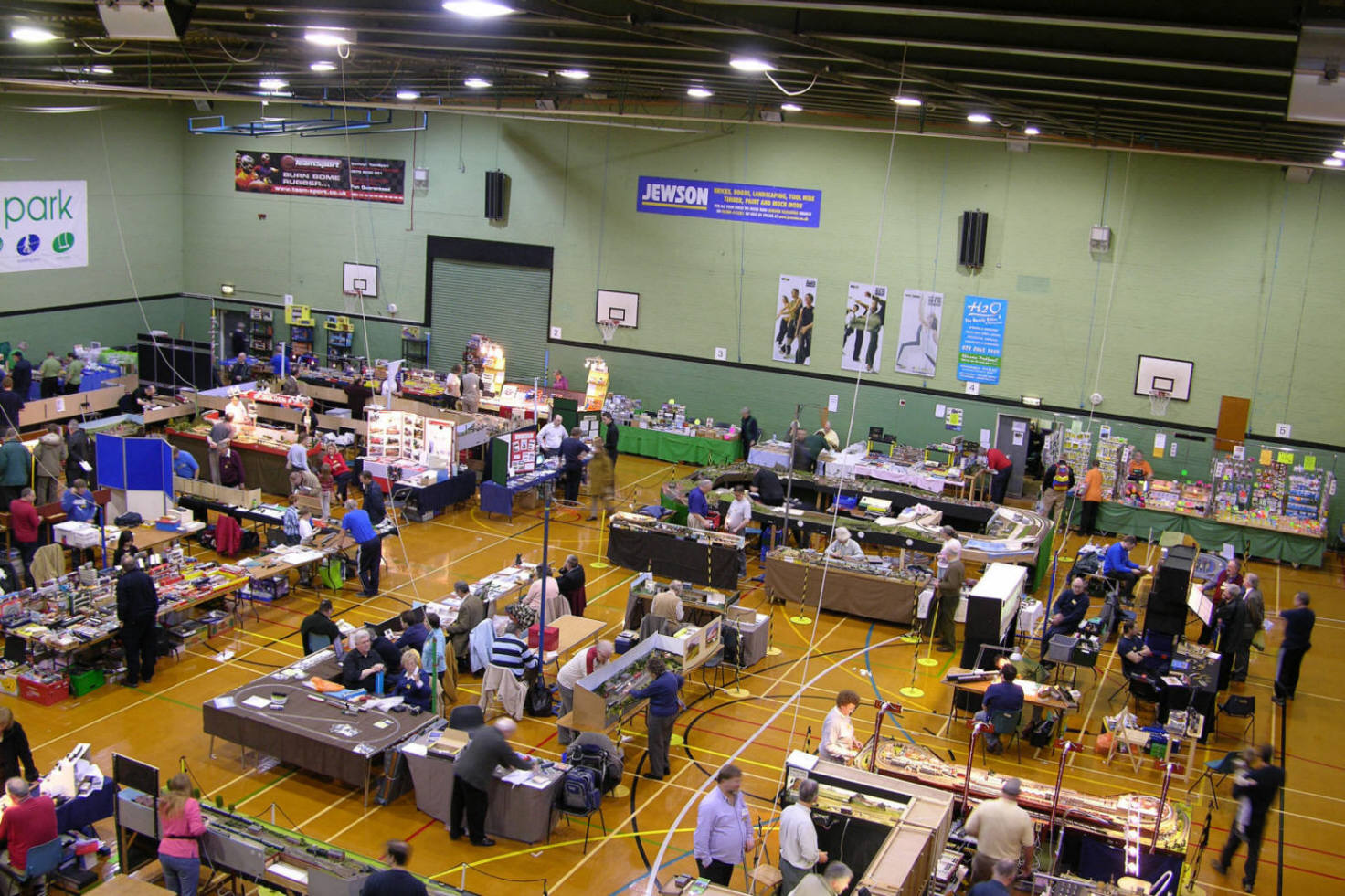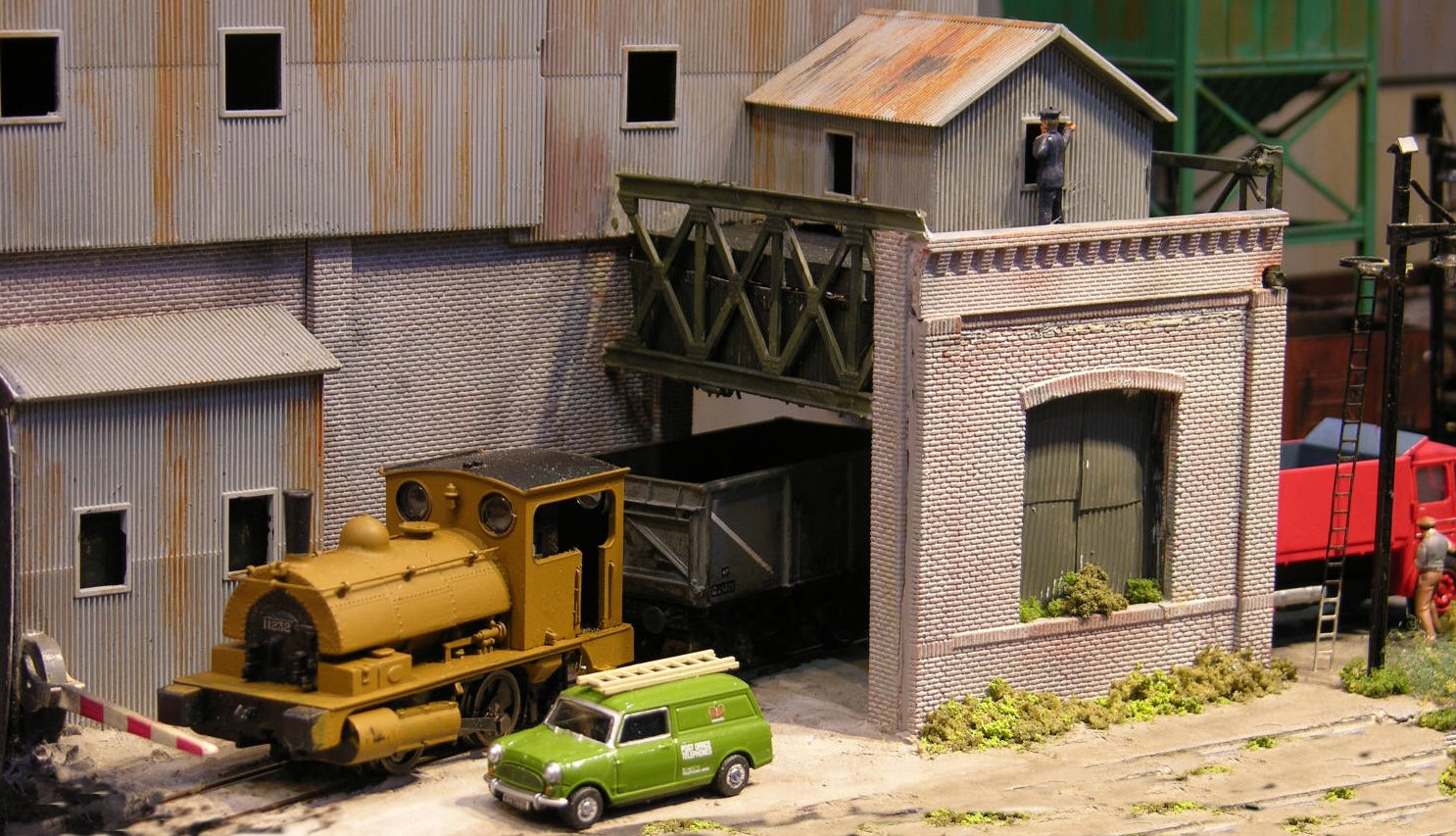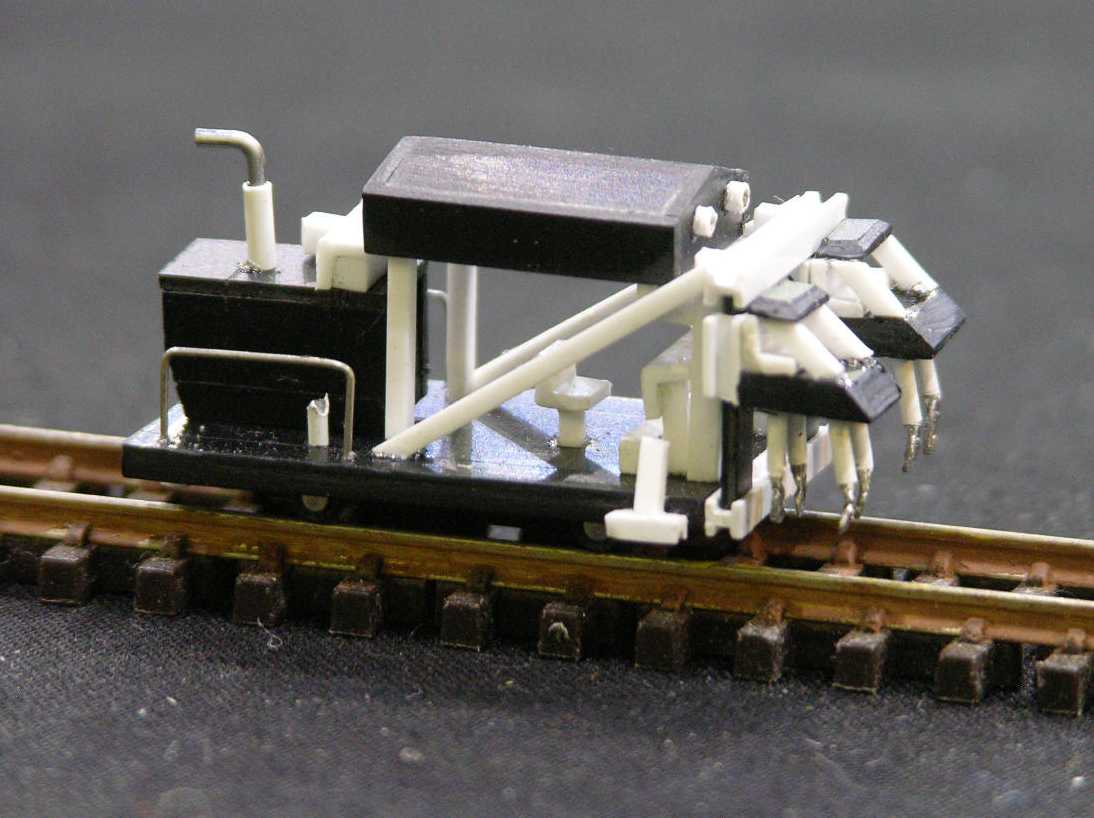 By Derek Gillkerson, Hedge End, Southampton.
By Derek Gillkerson, Hedge End, Southampton.
"
Having discovered that the original STANTON LEES baseboard had collapsed I
decided to rebuild the layout completeley, using new materials, track plan, Peco code 75
track & live frog points.
Most infrastructure is new, the remainder “Recycled“ from the previous layout. This
small layout 96“x12“ (8’x1’) (244cmx31cm). was built to operate Class 121,142,153,
Diesel Multiple Units, also on the layout can be seen “Track Refurbishment Units“, Class
37, 47, 66, Diesel Locomotives, and “VGA Vans“. Most of the units have had the
couplings converted to “Kadee“ makes that area look more realistic and easier to couple
two units together.
The warehouse complex and loading/unloading dock is by Modern Structures in
Miniature.
One of the EDDIE STOBART lorries is a scratch built version and is NOT repeatable.
The scale is 1/72 as near as can be managed to 1/76. (Complete with flashing lights)! Also
on the layout is a 1/76 EDDIE STOBART Fan Club Members Limited Edition VOLVO
lorry.
Layout does not resemble any location, just a compact layout to show how much can
be put into a small space, yes, you do not need a double bedroom, full size loft,or a double
garage. (Dream on)!
Name of STANTON LEES (The original layout) was an inspiration from my Wife, so
as to keep the memory of this very small village which is way up in the Peak District of
Derbyshire (Where we have spent many a Holiday) it was decided to name the replacement
layout “NEW“ STANTON LEES.
My thanks to Ron Boreham and David O’Meara for their help and advice in building
this layout, and to George Gibbins for the layout drawing
"
|





